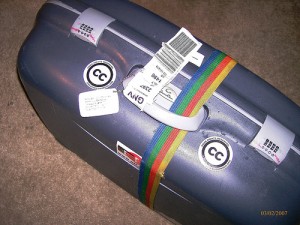1:1 ... The Laptop Journey
A year ago I was hired by the American International School of Guangzhou to help develop a 1:1 laptop program at the school. This blog is about that journey.
Get the Needed Support … Create Ownership
As group of technology integrationist, we know it will be a journey we cannot do on our own. We will need the support of the board, the parents, and the teachers. Bringing these groups together is key to the development and success of the program.
We started with the support of our administration, after all they hired several of us with integration in mind. What that would look like they were not sure and continues to evolve.
Our game plan so far has been to get the school board to join in with us. In order to do so, they were asked to give us the directive to pursue and plan for a 1:1 program. The Administration took our request to the board. They agreed for us to create a time line and pursue a 1:1 program.
No Lone Rangers … Create a Team
We formulated a technology team from the teachers in all divisions of the school. This team is the baseline for many of the decisions and advice given to the direction of the 1:1 program, after all, they are the real users. The teachers were enthusiastic to move in the 1:1 direction. They have helped spurred us on to pursue the 1:1 plan and gave input as to a time line for integration among the schools.
Start Small and Then Grow the Program
The team decided to start with a grade 5 as our integration point. There were several reasons for this: The classroom is contained … there would be control over the use of the computers. Second, the computers would be school owned and therefore would not be going home, the school has full control. Third, we would be able to offer professional development for fewer teachers. Fourth, we have a core of four teachers who continue to talk and share ideas with each other.
Professional Development … This is the Place To Start
We jumped quickly into the 1:1 program. Perhaps a bit too quick but because we have started small, we have been able to handle the change. We have placed an emphasis on professional development before getting the computers into the hands of the kids. Well, we didn't. However, the grade 5 teachers have been a resilient bunch and group of individuals who have been willing blaze the trail. They walked into classrooms equipped with HP 2230 laptop computers. Their introduction to the classes was gradual. Fortunately, we sent them to the Learning 20.10 conference in Shanghai early in the year. They came back energized and willing to try out many of the new skills they learned. They meet weekly to discuss what has been going on in their classes which has continued the growth of the program.
This past fall the technology department offered classes through the State University of New York, Buffalo. Twenty-three teaching staff spent four hours on a Saturday in professional development. We had sessions in Moodle, VoiceThread, and EtherPad. After the class, another 11 hours of planning, meeting, and practicing the integration of technology into the classroom took place. The day was a total success.
Next Step … The Platform
If I could go back and make a change over the past year, there would be one change I would do … decide on a platform before starting with the 1:1 program. The tech committee was asked for their input on choosing a platform to use. We invited presentations from Dell, Lenovo, HP, and Apple. Each was given the specifics of the speed and size of the laptop we required, the software needed, teacher professional development and the support of an on-site repair service. Presentations were given to the tech committee and the technology assistants who would work with the hardware. Eventually the technology committee voted unanimously to go with the Apple platform. Last week the board voted to support the Apple Mac platform. They have also agreed that the school will supply grade 5 students with MacBooks but Middle School and High School parents will purchase the students computers.
Next Steps ...
Apple computer has invited the school administrators to Hong Kong for professional development. I'm not sure what it is about. They are there today (29 Nov 2010). Future decsions will need to be made regarding what computers we will offer through our vendor, what to do about those who already have a Mac, creating a set of Q&A for parents and students, and a host of other decisions.
Until next time …
Dave


 It has been coming increasingly important to get students involved in the planning and carrying out of the technology plan. One of the aspects of that plan is how to anticipate and problem solve situations that don’t exist. One person and even one department will have a difficult time keeping up with the task.
It has been coming increasingly important to get students involved in the planning and carrying out of the technology plan. One of the aspects of that plan is how to anticipate and problem solve situations that don’t exist. One person and even one department will have a difficult time keeping up with the task. 